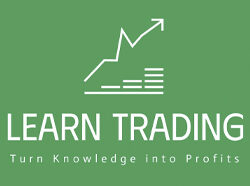Gold algo trading, also known as algorithmic trading in gold markets, is a complex technology that enables traders to make deals based on predetermined rules and automated trading systems. This method is also known as mining trading. For the purpose of making educated trading decisions, adapting to shifting market conditions, and optimising entry and exit positions, this strategy makes use of historical data, technical indicators, and complex algorithms. When it comes to the highly competitive world of gold markets, having a solid understanding of the subtleties of gold algo trading can provide a major advantage, regardless of whether you are an experienced trader or a novice.
Learning Gold Algo Trading
Algorithmic trading in gold refers to the practice of executing deals in gold markets through the use of automated trading systems. These systems are pre-programmed with rules that determine when to buy or sell securities depending on a variety of factors including price movements, technical indicators, and historical data. These rules are programmed into the system. The fundamental objective is to minimise transaction costs, diminish emotional decision-making, and maximise profits through deals that are both efficient and timely.
One of the primary advantages of gold algo trading is its capacity to respond to changing market conditions. Traders are able to react quickly to price swings and market trends because to sophisticated algorithms that are able to analyse large volumes of data in real time. This versatility is vital in the volatile gold markets, where prices can move rapidly due to a number of economic and geopolitical variables.
The Value of Technical Indicators
Technical indicators play a key part in gold algo trading. One of the most often utilised indicators is the Relative Strength Index (RSI), which evaluates the speed and change of price movements. The RSI can help traders detect overbought or oversold levels in the market, providing significant insights for entry and exit locations. By incorporating the RSI into their algorithmic trading techniques, traders can make better informed decisions and improve their trading performance.
Other technical indicators, like as moving averages, Bollinger Bands, and MACD (Moving Average Convergence Divergence), are also widely utilised in gold algo trading. These indicators assist traders detect trends, support and resistance levels, and potential reversal points. By integrating various indicators, traders can construct robust trading methods that are better able to tackle the intricacies of gold markets.
Developing Successful Trading Strategies
Developing effective trading techniques is a vital component of successful gold algo trading. Traders must specify explicit rules for entry and exit points, stop losses, and profit targets. These guidelines should be based on historical data, technical research, and a full understanding of gold pricing dynamics.
One prevalent method in gold algo trading is mean reversion. This method is based on the concept that gold prices tend to revert to their mean or average price over time. By recognising departures from the mean, traders can execute trades that capitalize on the projected reversal. Mean reversion tactics can be particularly useful in short-term trading, as market changes are frequently more predictable.
Another typical method is trend following. This strategy involves detecting and tracking recognised trends in gold markets. By using technical indicators to confirm trends, traders can make trades that align with the prevailing market direction. Trend following tactics can be particularly beneficial in strong trending markets, when prices move persistently in one direction.
Risk Control in Gold Algo Trading
Risk management is a vital part of gold algo trading. Traders must employ appropriate risk management tactics to protect their capital and reduce losses. This involves setting stop losses, diversifying their trading techniques, and regularly checking their trades.
Stop losses are critical for limiting potential losses on particular deals. By setting specified exit points, traders can automatically close positions if the market swings against them. This helps to prevent significant losses and maintains funds for future trades.
Diversification is another essential risk control method. By trading across numerous asset classes and adopting different trading techniques, traders can diversify their risk and limit their exposure to any single market or approach. This strategy serves to balance out returns and provides a more stable trading environment.
Experience the Future of Gold Trading. Start with Gold Algo Trading.



